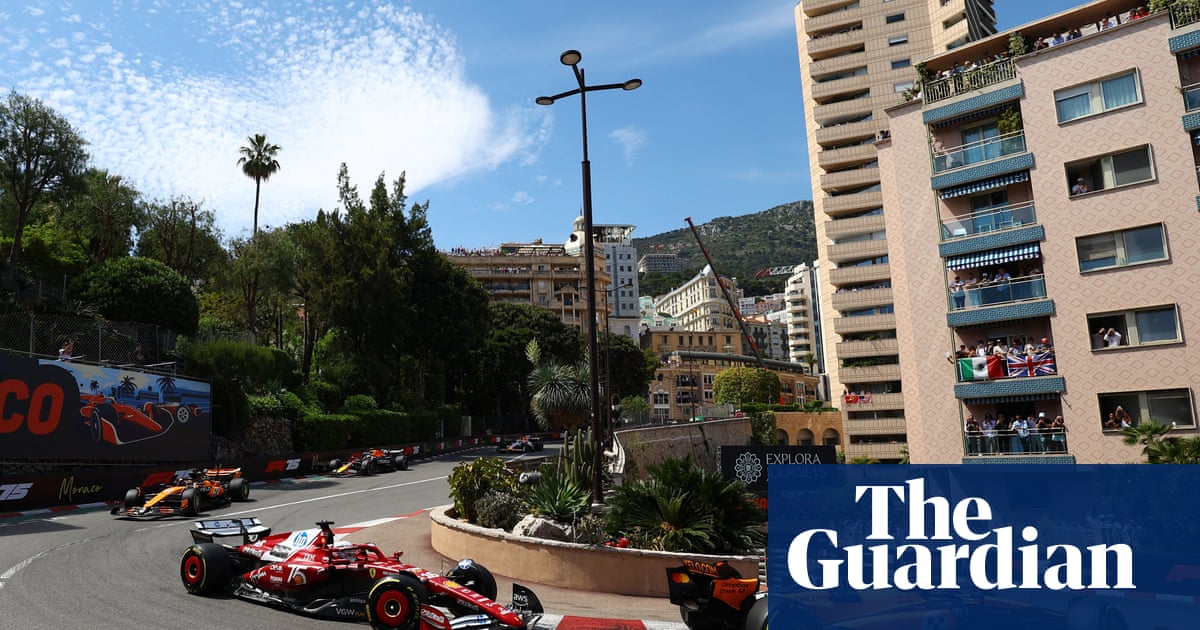Formula One team principals have called for layout changes to be considered at the Monaco Grand Prix to address the inability of cars to overtake after efforts to enliven the race with mandatory pit stops fell flat on Sunday.
McLaren’sLando Norris took victory in Monte Carloand was, despite the two pit-stop rule, in control throughout, Indeed only two passes were made on track across all 78 laps and drivers including Red Bull’s Max Verstappen, who finished fourth, and Mercedes’ George Russell, who was 11th, dismissed the pit-stop rule change as all but pointless.
The Red Bull team principal,Christian Horner, believed the most important change that was required was to alter the layout to create one area where overtaking was at least feasible.
“The fundamental problem is you cannot overtake here. The cars are so big now that you just don’t have a chance to get alongside,” he said. “It’s circuit specific, we’ve known that, it’s been on the calendar for 72 years. Everything has to move with the times ultimately.
“It’s an iconic and historic circuit but if you look at how Monaco has changed, how much land they’ve reclaimed into the sea, I don’t think you’d need to do too much. There just needs to be one area where you can have an overtake and everybody knows that coming here the race was pretty much done on Saturday. We’ve introduced another dynamic with the pit stop which ultimately for the top 10, other than the retirement, nobody really changed position.”
The race was marked by the leading teams matching each other through the pit stops and the absence of a safety car or red flag to bring an element of chance into proceedings. While in the midfield, teams applied teamwork between drivers to create pit window gaps that involved deliberately driving slowly to the infuriation of others who, with an inability to overtake, were left impotent in a train on track. Very few were satisfied with the outcome.
Norris said it had created jeopardy by the risk of mere fortune deciding the result rather than in the form of actual racing. “There’s not been any more overtaking here. I thought that was what was wanted,” he said. “Now you just give people opportunity by luck, by waiting for a red flag, waiting for a safety car. You aren’t getting a more deserved winner in the end of things.”
The race organisers, the Automobile Club de Monaco (ACM), believe that changing the track layout is all but impossible but Norris’s team principal, Andrea Stella, suggested it was worth bringing into the equation.
“We should praise the fact that Formula One and the FIA made an attempt to improve racing in Monaco,” he said. “The main limitation remains the fact that you cannot overtake and this is quite structural as a limitation and I am not sure exactly how this can be modified just simply by imposing a certain number of pit stops.
“I’m not sure there’s anything that can be done from a track layout point of view, to be honest I’ve never thought of this aspect but maybe there’s something that we should consider.”
In what might be considered an unusual show of solidarity that may make F1 take notice, the Mercedes team principal Toto Wolff concurred with his rivals. He suggested that imposing a minimum lap time might be feasible to prevent driving unnecessarily slowly and discussing altering the layout with the organisers.
“What we can look at is to create some more specific regulations that there’s only a maximum of back-off that you can have,” he said. “Does it improve the overtaking? I don’t think that’s feasible. We need to talk also with maybe ACM here. Is there anything we can change on the layout, if you could in a city limited by mountains and the sea.”
